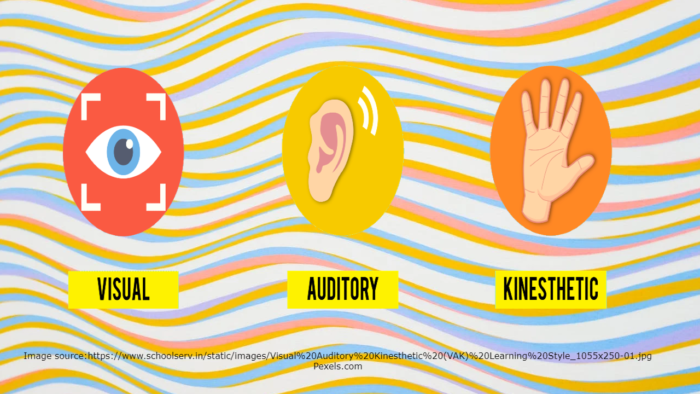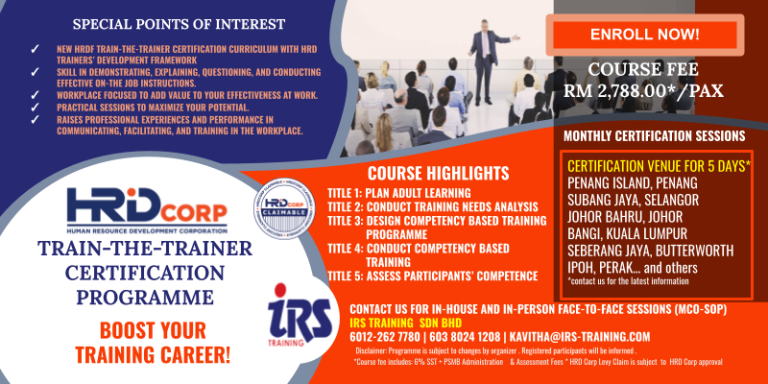
KNOW THE V.A.K LEARNERS TO ELEVATE YOUR TRAINING
Everyone has their own unique way of seeing the world, and as a result, everyone has a preferred method of gaining knowledge.
For the trainer like you and I, adapting your training to the specific needs of the participants modelled after the greatest trainers’ success in ensuring that every learner is excited to fully comprehend the material.
![]() On the individual level, we are required to concentrate on individual learning profile in the training session. Thus, the learning style concept is designed for trainers who want to customize instruction but struggles due to the number of learners in online and physical training session.
On the individual level, we are required to concentrate on individual learning profile in the training session. Thus, the learning style concept is designed for trainers who want to customize instruction but struggles due to the number of learners in online and physical training session.
Different learning styles may have a significant influence on the way trainers approach their learners. It impacts even the way you, as the trainer, organise group projects and spills over to how you tailor individual learning.
Trainers may find that a small number of their learners are falling behind their peers, in part because their individual learning styles haven’t been recognised and tapped into.
So, what strategies do you use in your online or offline classroom to accommodate a variety of participant preferred style when learning?
Probably, you can benefit from learning about the three main kinds of learning styles and how they may be used in the classroom by instructors.
Taking a look at three different learning styles:
The fundamental concept in dealing with learning styles rests on people learning in a number of ways, and not everyone falls neatly into a single category. The following are the most prevalent sorts of participants, in that order:
1. Visual Learners ![]()
How to tell whether a participant is a visual learner: A person who prefers visual learning is drawn to images, diagrams, written instructions, and other visual aids. The “spatial” learning approach is also known in this category.
By using visual aids in your training session, participants who learn visually are better able to retain knowledge. These learners are likely doodlers, the list-makers, and the note-takers in your classroom.
Using whiteboard or smartboard when it comes to visual learners can never go wrong. Allow participants to create diagrams and images on the board, or invite them to doodle examples of what they’re studying. Training sessions distributing handouts and presentations tailored to the needs of visual learners should be made on a regular basis. Visual learners, on the other hand, may need more time to comprehend information since they are more reliant on visual signals. For those who are more visually oriented, make sure that they have some time and space to process the material.
2. Auditory Learners![]()
How to tell whether a participant is an auditory learner: Whenever the subject matter is accompanied by sound, auditory learners are more likely to retain the information. Rather than reading notes, these participants prefer to listen to lectures, and they frequently use their own voices to help them remember new topics. They prefer to read aloud to themselves rather than read silently. As a result, they’re able to stand up in class and explain things clearly to others. In addition, they may be unable to read at a normal pace, and they may often repeat what their trainers say.
Ask your participants who have a hard time staying silent for lengthy stretches of time to repeat what you’re saying back to you throughout your lectures. Let them respond to your questions. Assemble a discussion group to aid in the comprehension of material delivered to your auditory and verbal processors. This group may also benefit from watching videos and listening to music or audiotapes.
3. Kinesthetic learners![]()
A few ways to spot your class’s kinesthetic learners: Kinesthetic, or tactile learners gain knowledge by doing or experiencing new things. In order to better learn topics, they like to participate actively by enacting scenarios or manipulating objects with their hands. Participants that fall into this category have a difficult time sitting still . Those who are more movement oriented, studying may need a greater number of breaks.
The greatest technique to help kinesthetic participants learn is to get them moving in the classroom. Act out a scenario from a book or role play to a subject you’re teaching. Encourage these learners to walk about the classroom or write on the whiteboard as part of an exercise. By having them pace, you help them remember or by playing learning activities that require them to move around the classroom.
Understanding complex thoughts and challenging topics becomes much simpler for kinesthetic learners when they are able to physically experience what they are learning.
It’s not only in the classroom that you may learn about these distinct learning styles. Trainers empower their participants for the future by providing them with the skills they need at the workplace. If you can figure out how a participant learns best, it may have a significant impact on how effectively they engage with the material you’re teaching and how much they contribute to class participation.
Learn more about V.A.K learning style with other learning styles in the HRD Corp Train-The-Trainer Certification Programme.
Contact us for the monthly in-person face-to-face physical training or online medium of delivery (terms and conditions apply).
Come and join us.
Register today!
For details, you can contact our friendly administrative colleagues ![]() at:
at:
IRS Training Sdn Bhd – (HP) WhatsApp: +6012.2627780 | D/L: +603.8024.1208 |
Email: kavitha@irs-training.com |
Email: info@irs-training.com.
SEE YOU SOON IN OUR SESSION! ![]()
